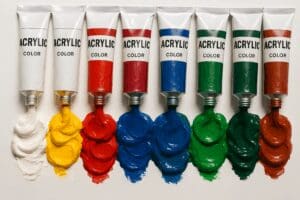Introduction:
——————
Embarking on a new painting can be an exciting yet challenging endeavor. One crucial step in the artistic process is sketching out your ideas before diving into the final masterpiece. Sketching serves as the foundation for your painting, helping you plan and visualize your composition. In this blog post, we will explore essential tips to enhance your sketching process, ensuring a solid groundwork for your next art project.
1. **Gather Your Inspiration:**
Before putting pencil to paper, gather inspiration from various sources. Visit art galleries, explore nature, or even scroll through online art communities. Engaging with different art forms can ignite your creativity and provide diverse perspectives for your painting.
2. **Select the Right Tools:**
Choosing the right sketching tools is crucial for a successful preliminary drawing. Consider using quality pencils, sketchbooks, and erasers. Experiment with different grades of pencils to achieve varied line weights and textures. A good sketchbook allows you to organize your ideas cohesively.
3. **Understand Composition:**
A well-composed painting starts with a thoughtfully planned sketch. Learn the basics of composition, such as the rule of thirds, leading lines, and focal points. Apply these principles to guide the viewer’s eye through your artwork and create a visually appealing piece.
4. **Start with Thumbnails:**
Begin your sketching process with small thumbnail sketches. These quick, small-scale drawings help you explore multiple ideas and compositions rapidly. Thumbnails are an excellent way to experiment with different arrangements before committing to a larger, more detailed sketch.
5. **Focus on Proportions:**
Maintaining accurate proportions is vital for a realistic and balanced painting. Pay attention to the relationships between objects, ensuring that they align correctly. Take measurements and use basic shapes to establish the overall structure before delving into finer details.
6. **Use Light and Shade:**
Incorporate light and shade into your sketches to understand the play of light on your subject. This technique adds depth and dimension to your preliminary drawing. Experiment with hatching, cross-hatching, and shading to create a sense of form and volume.
7. **Add Details Thoughtfully:**
While it’s essential to capture the essence of your subject, avoid overwhelming your sketch with unnecessary details. Focus on the key elements that convey your message or story. Leave room for interpretation and imagination in the final painting.
8. **Experiment with Different Styles:**
Don’t be afraid to experiment with various sketching styles. Whether you prefer realism, impressionism, or abstract, trying different approaches can broaden your artistic skills and help you discover your unique voice.
External Links:
——————
1. Understanding Composition in Art
2. The Importance of Thumbnails in the Artistic Process
3. Light and Shade Techniques in Drawing
*For collaborations, art features, or inquiries, please contact us at in**@**********rt.ie. Don’t forget to follow us on Instagram, Facebook, Twitter.
Disclaimer: The views and opinions expressed in this article do not necessarily reflect the official policy or position of Irish Artmart.




